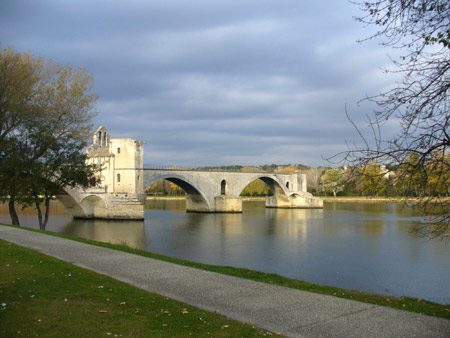 The next morning we went on a walking tour of Avignon. Our barge was docked a short distance from the famous 'pont d'Avignon' of nursery-
rhyme fame. Built between 1171 and 1185, it was the only bridge crossing this far south on the Rhone in the Middle Ages. It ws damaged several times by floods and in 1668 most of it was knocked down by a disastrous icy flood.
The next morning we went on a walking tour of Avignon. Our barge was docked a short distance from the famous 'pont d'Avignon' of nursery-
rhyme fame. Built between 1171 and 1185, it was the only bridge crossing this far south on the Rhone in the Middle Ages. It ws damaged several times by floods and in 1668 most of it was knocked down by a disastrous icy flood.
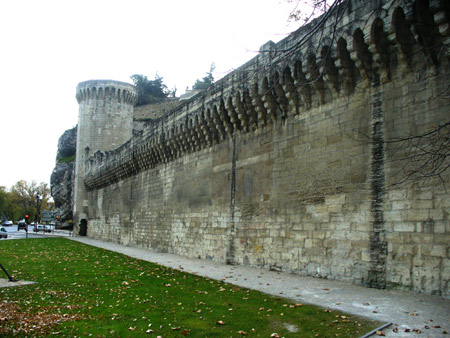 Most of the city walls of Avignon remain, built when the Pope came in the 1360's and restored in the 19th century.
Most of the city walls of Avignon remain, built when the Pope came in the 1360's and restored in the 19th century.
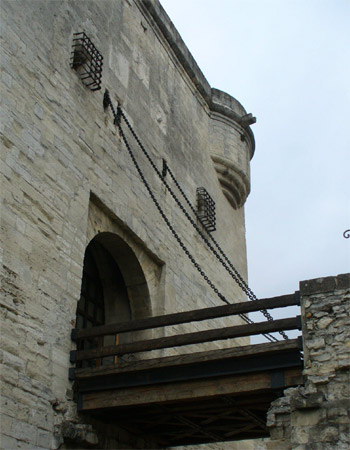 There is an old drawbridge which leads to..
There is an old drawbridge which leads to..
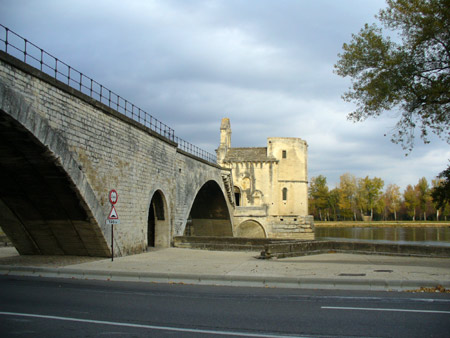 the bridge itself and the chapel on it with one story Romanesque and the other Gothic, dedicated to St. Nicholas.
the bridge itself and the chapel on it with one story Romanesque and the other Gothic, dedicated to St. Nicholas.
 We were soon in the square of the Palace of the Popes. Here we see the palace and the spire of the cathedral.
We were soon in the square of the Palace of the Popes. Here we see the palace and the spire of the cathedral.
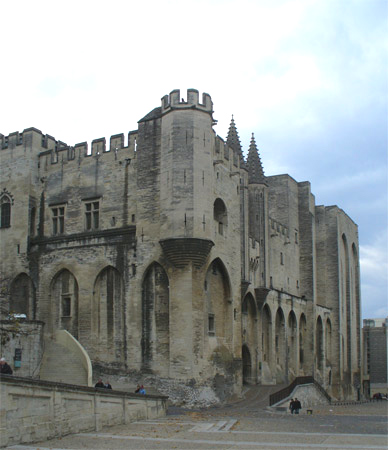 Avignon became the residence of the Popes in 1309, when Pope Clement V moved the Papal Curis to Avignon. He lived in a Dominican monastery, but Pope Benedict XII began the reconstruction of the old bishop's palace which was continued by his successors to 1364. From 1378 on there were two popes, one in Rome and one in Avignon, causing a schism in the Catholic Church that was not resolved until 1417.
Avignon became the residence of the Popes in 1309, when Pope Clement V moved the Papal Curis to Avignon. He lived in a Dominican monastery, but Pope Benedict XII began the reconstruction of the old bishop's palace which was continued by his successors to 1364. From 1378 on there were two popes, one in Rome and one in Avignon, causing a schism in the Catholic Church that was not resolved until 1417.
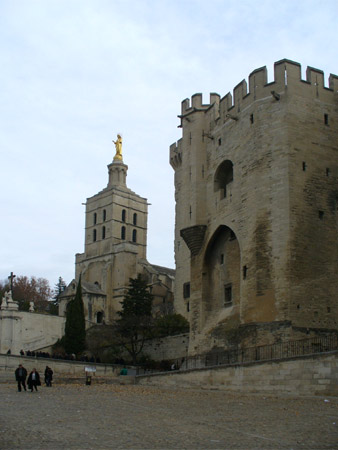 One of the towers of the Palace with the cathedral in the distance.
One of the towers of the Palace with the cathedral in the distance.
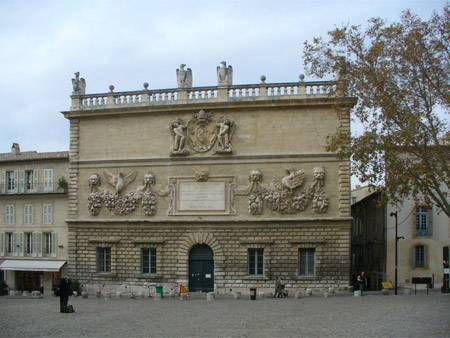 Directly across the square from the Palace is a cardinal's Baroque residence built in 1619.
Directly across the square from the Palace is a cardinal's Baroque residence built in 1619.
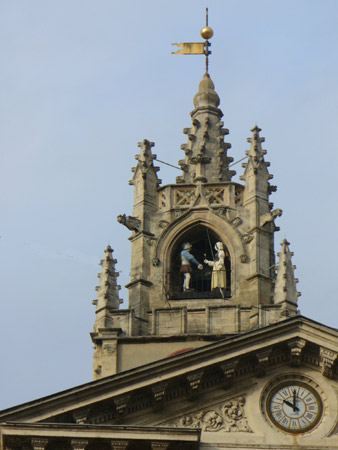
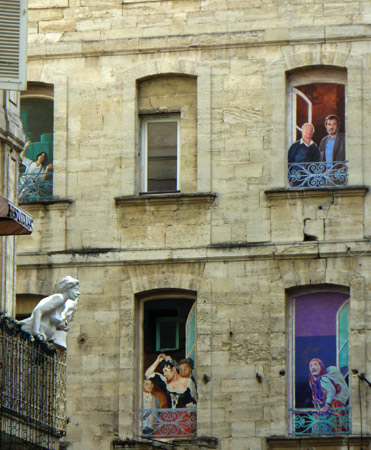
We walked to the main square of the city, called the Place de l'Horlogue (the square of the clock), which had been the town forum during Roman times and the market square through the Middle Ages. We were able to see both the 14th-15th c. clock in action and some of the much newer trompe l'oeil paintings and statuary in the nearby buildings.
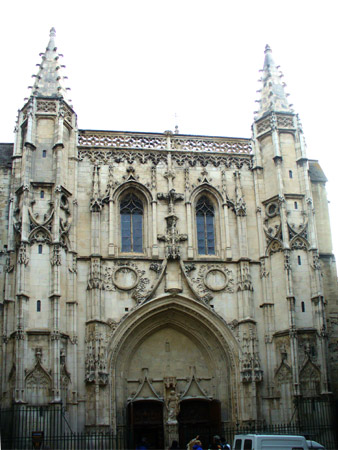
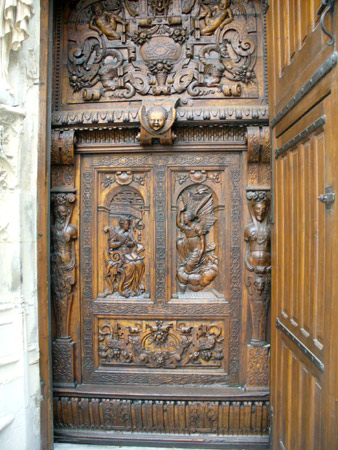
We next walked to the 14th-15th c. church of St. Pierre, with its 15th c. door panel carvings of the Annunciation.
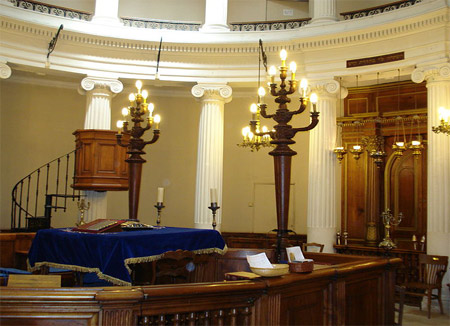 Next we visited a synagogue, where a Rabbi told us the story of the Jews in Avignon, who were active in the building of the Palace of the Popes. Jews lived there until 1942 when the French collaborated with the Nazis and they were then killed or driven out. Eventually some returned and reestablished the synagogue.
Next we visited a synagogue, where a Rabbi told us the story of the Jews in Avignon, who were active in the building of the Palace of the Popes. Jews lived there until 1942 when the French collaborated with the Nazis and they were then killed or driven out. Eventually some returned and reestablished the synagogue.
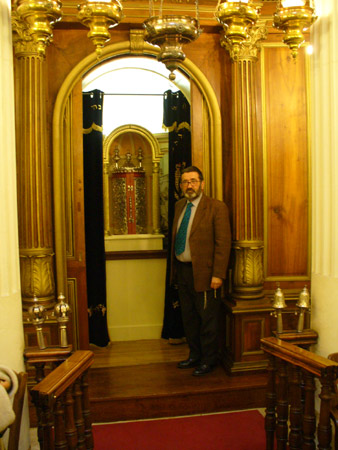
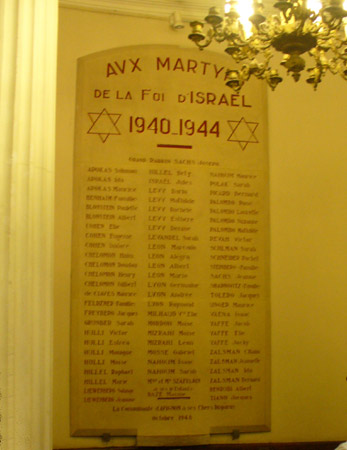
This is the Rabbi with the Torah and one of the many memorials for the Jews who were killed.
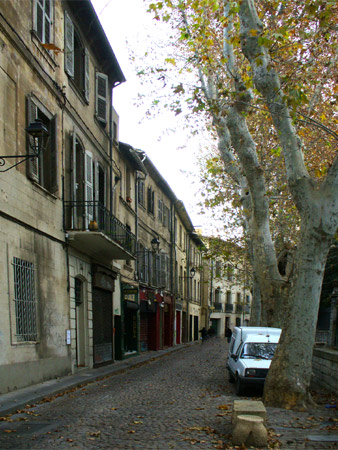
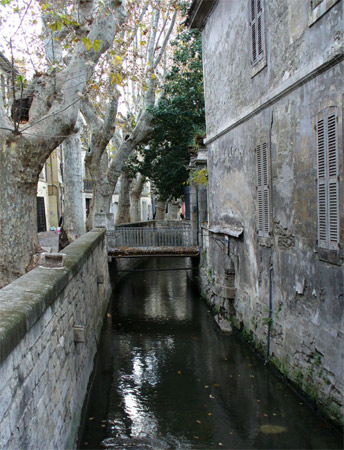
Another stop on our walk was the Cloth Dyer's Quarters (Quartier des Teinturiers) along a narrow street following the course of the River Sorgue.
 A few waterwheels remain here to show how waterwheels were used to power the industry of that day.
A few waterwheels remain here to show how waterwheels were used to power the industry of that day.
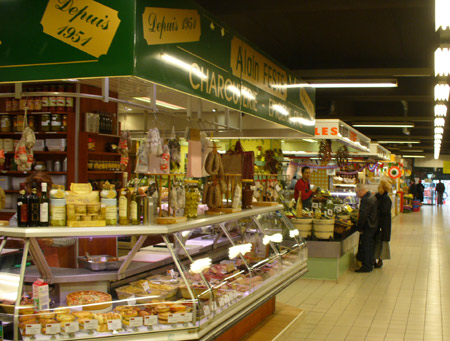 On our way back to the square of the Palace of the Popes, we stopped at this modern market.
On our way back to the square of the Palace of the Popes, we stopped at this modern market.
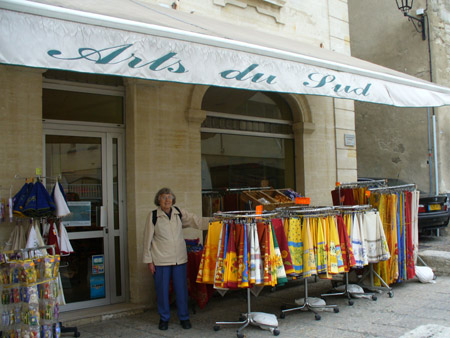 Elizabeth found this shop where she had bought a tablecloth on a previous visit to Avignon.
Elizabeth found this shop where she had bought a tablecloth on a previous visit to Avignon.
 Back in the square we had a better look at the 12th c. Romanesque Cathedral Notre-Dame des Doms with its statue of Mary, added in 1854 when the Vatican established the doctrine of her Immaculate Conception.
Back in the square we had a better look at the 12th c. Romanesque Cathedral Notre-Dame des Doms with its statue of Mary, added in 1854 when the Vatican established the doctrine of her Immaculate Conception.
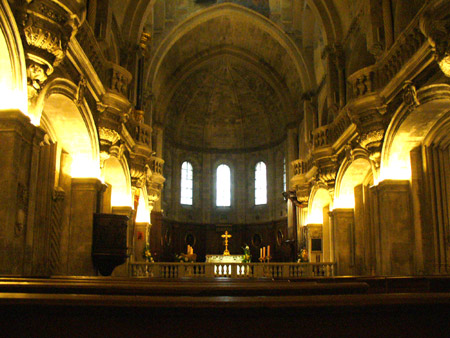 We went inside to see the cathedral, which seems as though it is carved out of the rock.
We went inside to see the cathedral, which seems as though it is carved out of the rock.
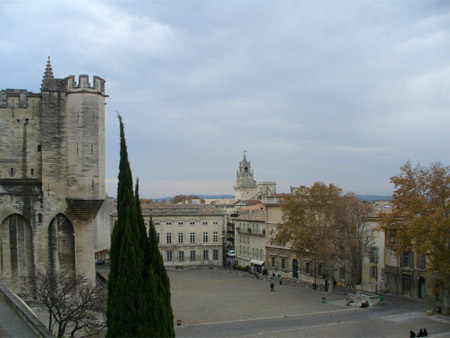 From the front of the cathedral, we could look down at a corner of the Palace of the Popes, the square and, in the distance, the Clock Tower.
From the front of the cathedral, we could look down at a corner of the Palace of the Popes, the square and, in the distance, the Clock Tower.
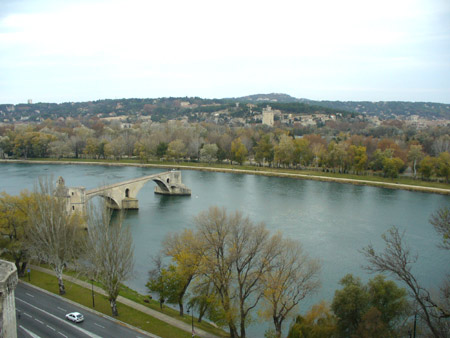 As we continued to walk up to the Parc des Rochers des Doms (the Dom rock), it began to rain but we still had a good view of the river and the bridge below.
As we continued to walk up to the Parc des Rochers des Doms (the Dom rock), it began to rain but we still had a good view of the river and the bridge below.
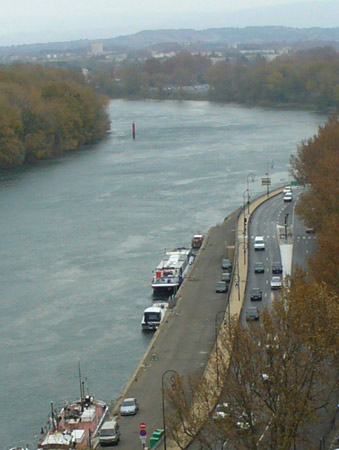 From the other side of the park, we could look down on the river and our barge. We made our way there and enjoyed the dry, warm lounge of the ship.
From the other side of the park, we could look down on the river and our barge. We made our way there and enjoyed the dry, warm lounge of the ship.
 That afternoon we sailed from Avignon with a last look of the bridge,...
That afternoon we sailed from Avignon with a last look of the bridge,...
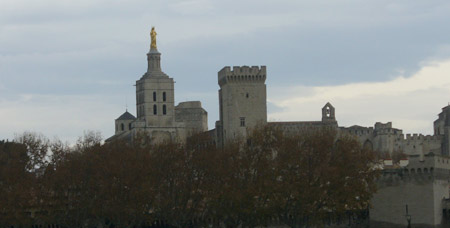 ...the cathedral, and the Palace.
...the cathedral, and the Palace.
We docked at Vallabrègues for the night and sailed to Arles the next morning.
